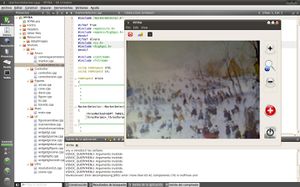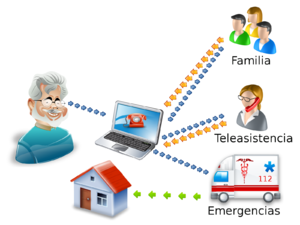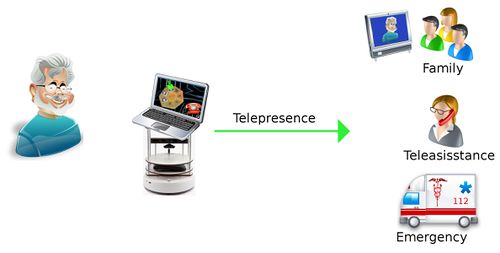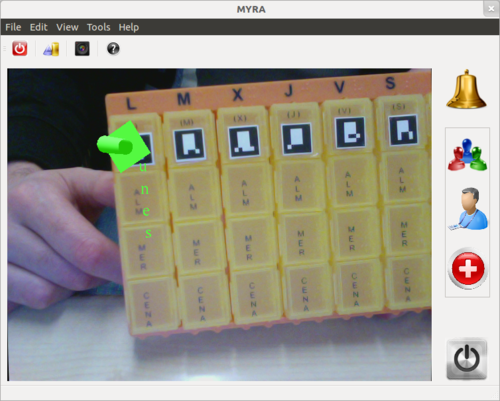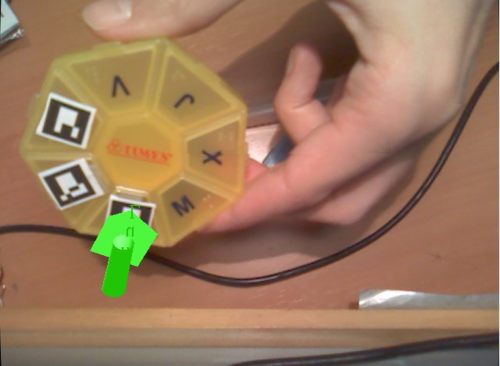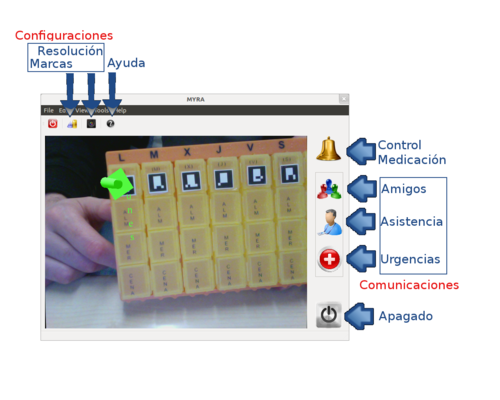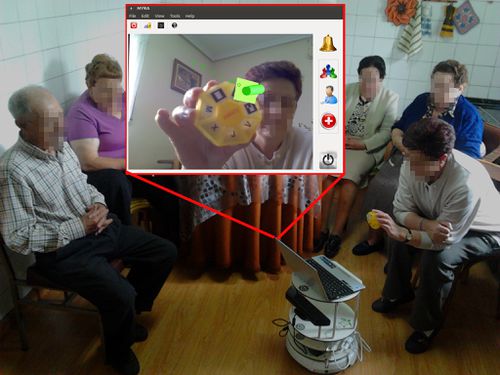Catedraproject2012
Contents
Augmented Reality in tele-assitence of elderly people
Project Presentation
- Project Name:
Augmented Reality in tele-assitence of elderly people
- Official Web Page
Catedra Telefónica Web Page
- Staff:
Director:Francisco Javier Lera Co-Director: Juan Felipe García Sierra Technical Software:Álvaro Botas (Granted) Technical Hardware:Carlos Rodríguez
- Other Information:
* Academic Year: 2011-2012 * SVN Repositories: soon ... Alfa version on demand. * Tags: Augmented Reality, Elderly people, Tele-Assistence * Technology: c++, svn, OpenCV, cmake, OpenGL, Qt, Aruco * State: Development
Summary
The main objective of this project is the development of an autonomous system with Augmented Reality ready for real interaction with older people . This will be apply in two differents contexts:
- Day By Day help to elderly people in their home.
- A generic teleassistance system.
The first context, is oriented in a control system drugs. We are going to develop control system for daily medication that a patient, in this case an elderly, needs to be controlled.
The second context, search a solution able to coexist with the red cross telephone. This device, is a typycal phone plus a locket that elderly people could use to have tele-assistance
Robotics
Our first aproach to this project was to implement all of our software to work directly with a tabletPC or with a PC, but our main idea is to deploy our development in a robot.
The robot election was hard. Latetly a few robot systems are available. The main difference between them can be made as:
- Economic solution
- Easy and large group of development
First approach, economic solutions. We can afford robots like Rovio WowWee, a toy that during a year we use to make differents final project and robotics courses. The price is almost 300 € by unit. Last year we develop our kernel development allowing us to avoid low level development an center in a high level projects like augmented reality.
The second approach, is based in the use of a robot taken in account the develpment community. Why? because this can improve our development and decrease our low level problems, for instance, problems with hardware - software synchronization.
Well, the idea of our project is make an application that could be easily applicable. But we will need to apply in many environments to test and validate our proposal. For this reason an expensive robot solutions can not be used.
In last years, Willow Garage has been a reference for most robotics labs. In this way ,their robot turtlebot, seemed to fit our needs. The price of this robot was almost 1.2K € and the software available to development was ROS (Robot Operating System). ROS libraries can allow us to afford developments using common languages like C++ or Python. Also it presents a big robotics community that we can use as a information source and a place where we can present our works
Details of Turtlebot and TurtleRoomBot (our turtlebot solution following WillowGarage Turtlebot design)
Catedraproject2012robotics Technical resume
Software
Myra:First Phase
The code name for this part is MYRA (Mayores y Realidad Aumentada, elderly and augmented reality in spanish). This development comes from an experimental test carried on in our lab last year. The experiment consisted of applying AR (augmented reality) in teleoperation tasks by non-technical users.
How we explain before, we want to develop a system to daily control drugs. Showing to camera a tipycal pillbox with a modified front, the patient would know what pills are today. But it is easy to imagine that the digital gap will be hard to fill in this kind of technologies.
This system is oriented to people without knowledge in technologies that can found a valious tool in the day by day.
From the developer's side, the components by technologies are:
- C++:
- ArUco: a minimal library for Augmented Reality applications based on OpenCv.
- Qt:
- OpenCv:
Our main goal is to build a simple and intuitive interface. The interface must facilitate interaction between the elderly and the system. The reason is clear, get the desired results with minimal interaction.
Myra:Second Phase
In this second phase we have developed the initial software platform for the turtlebot platform. We initially prepared the platform for the MYRA app and also a telepresence system, it should looks like this:
But we wanted to deploy it in a robotic platform, so the first idea of this was:
Software
'MYRA Manual'
